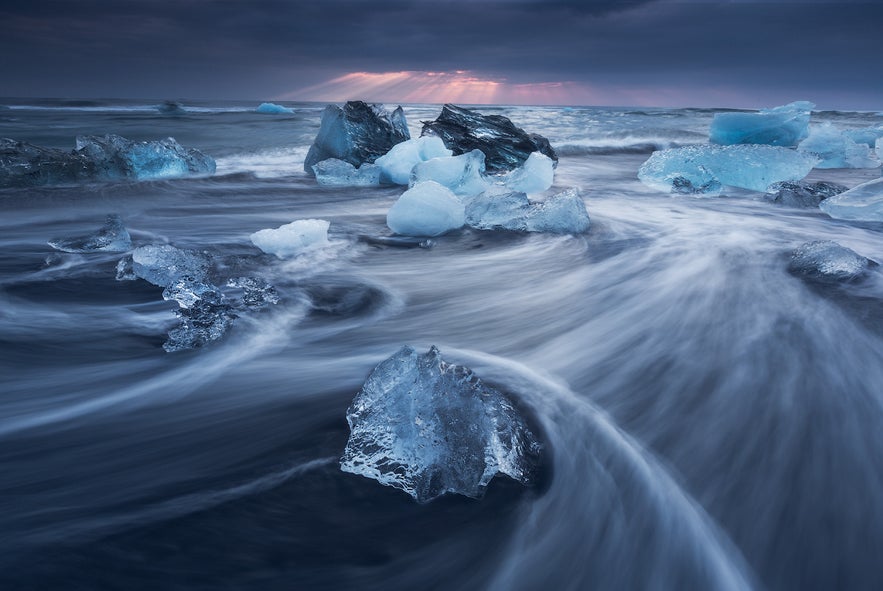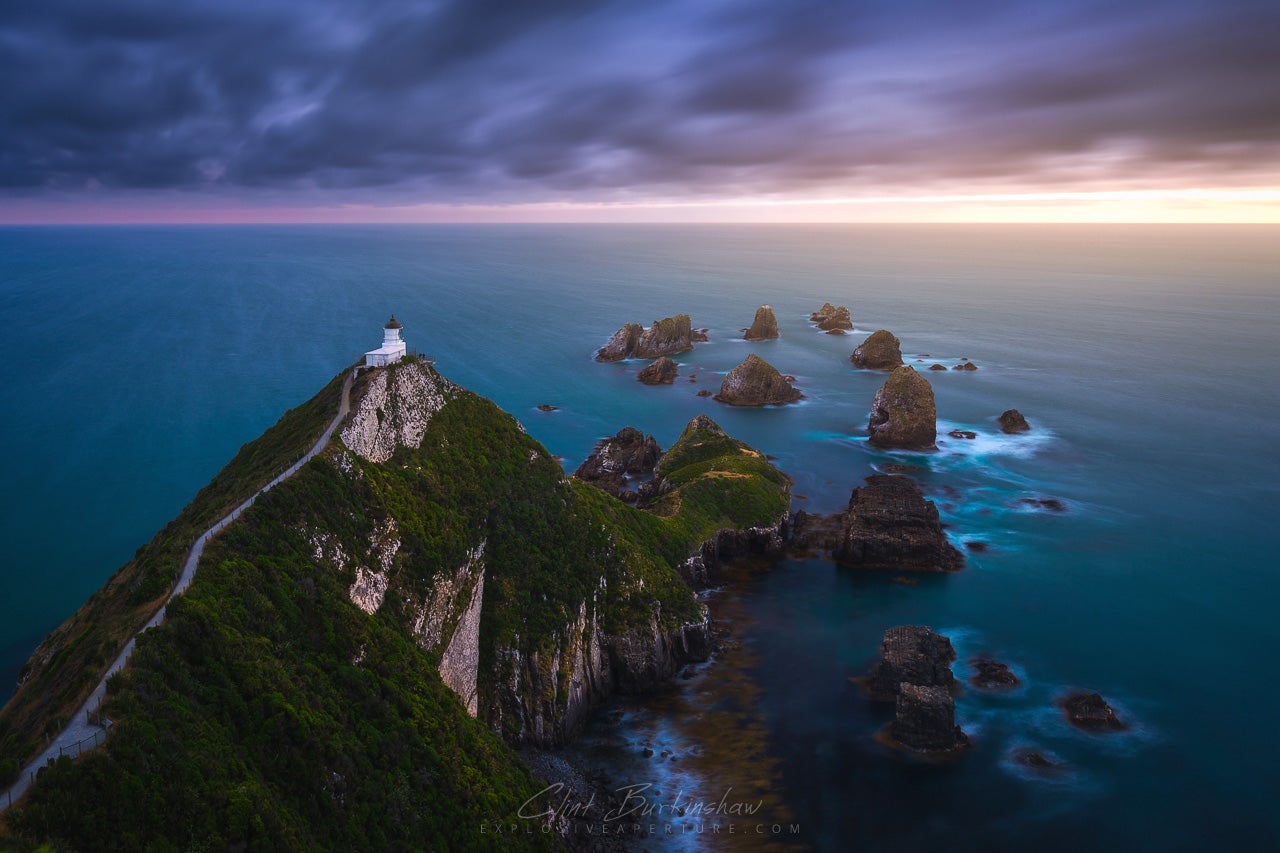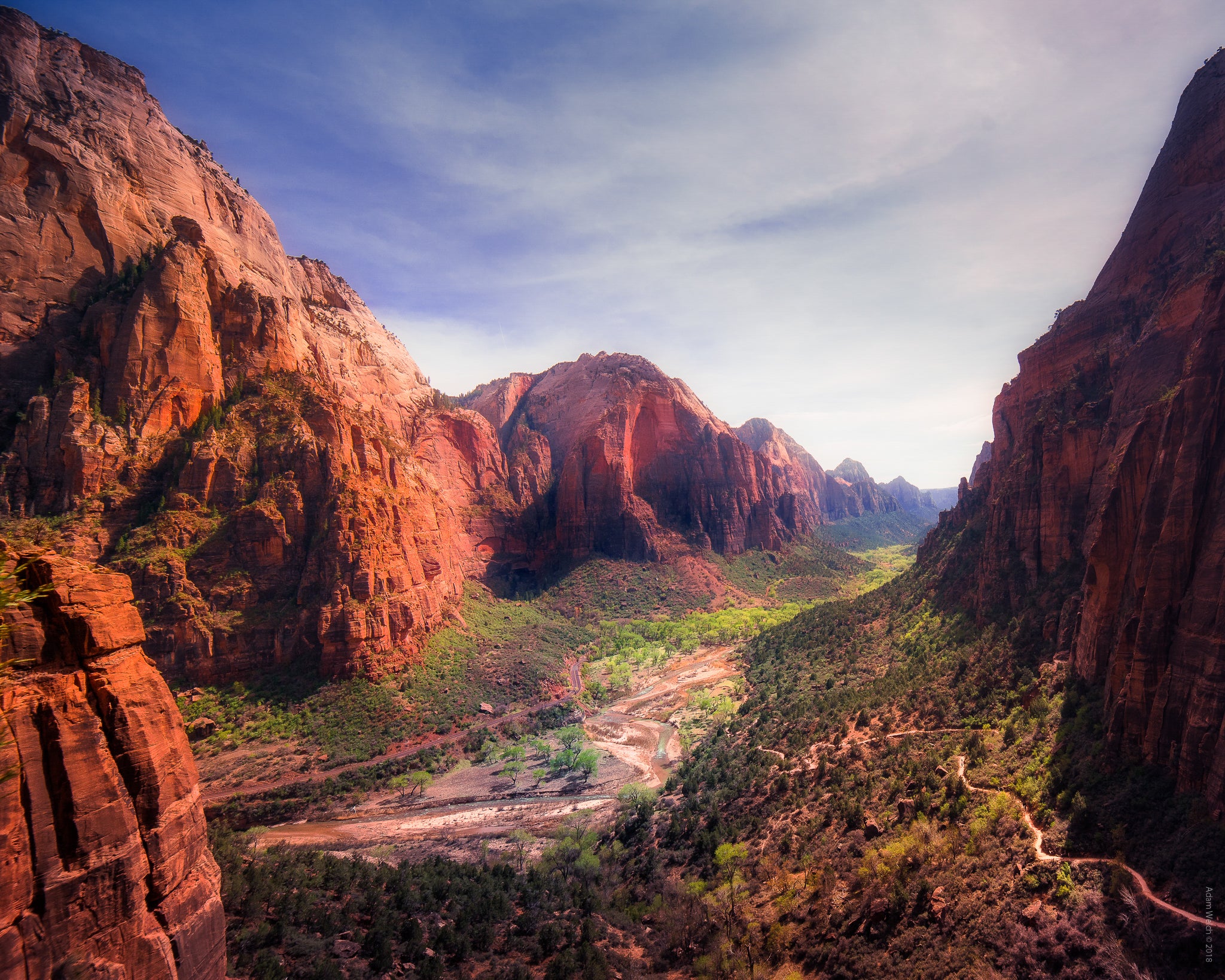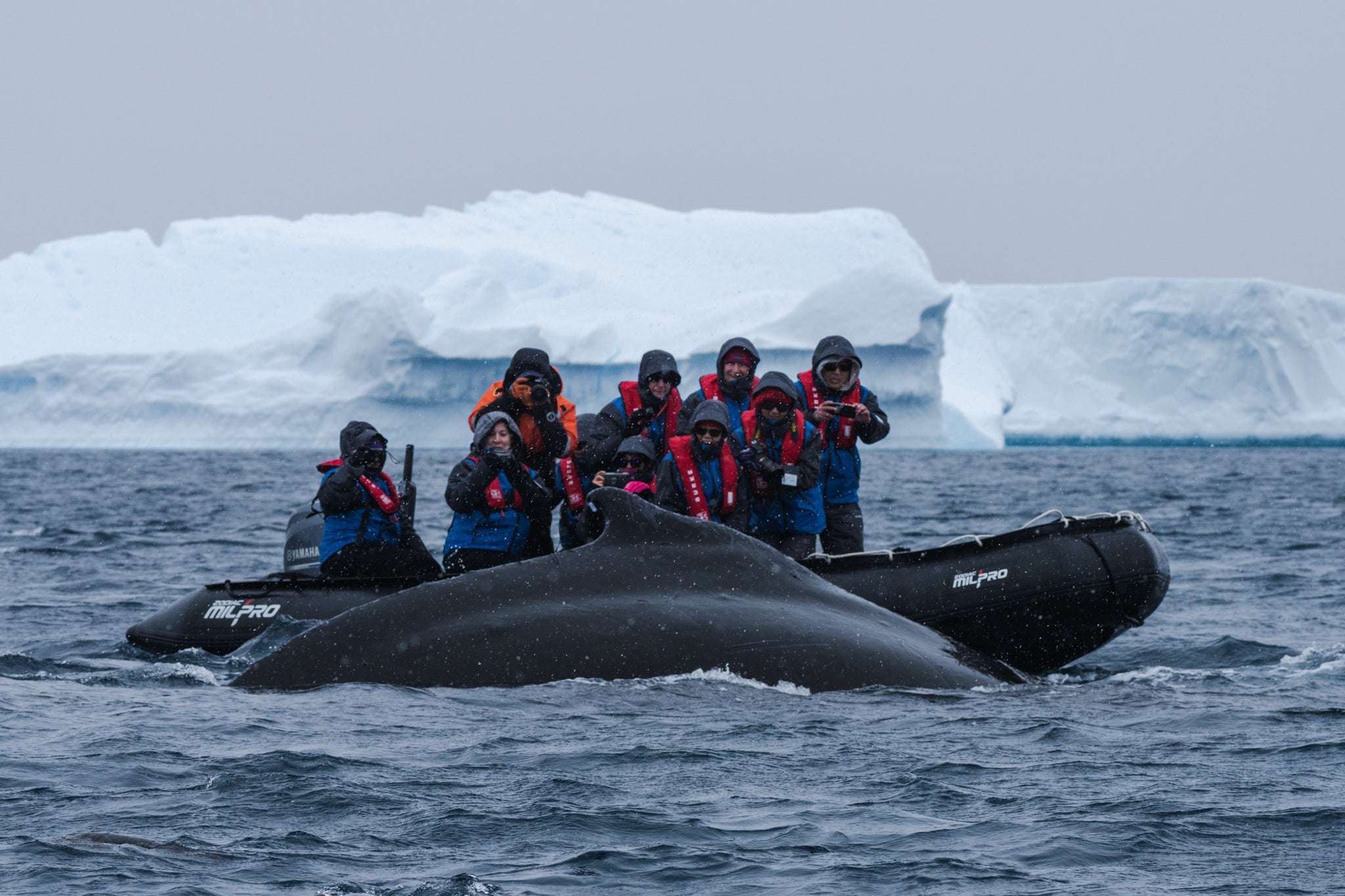
We’ve all heard the horror stories of people losing their camera gear, lenses, bags and their dignity in the tides of the beaches in Iceland!
- Read about Photographing Waves in Iceland: In-field to Post Processing
- Discover The Ultimate Guide to Animals in Antarctica
- Check out this article on Understanding Metadata | EXIF for Landscape Photography
From the dangerous sneaker waves at Reynisfjara in Iceland’s south to the enormous swells around Dyrhólaey, as a landscape photographer, you are probably well-aware of those who have been knocked over before you by the waves, saved in the nick of time before the undertow swept them far off into the sea. So how exactly can you keep yourself safe while photographing at the coastline in Iceland?
Be Aware of Sneaker Waves
While you are actively shooting, you probably aren’t paying too much attention to the waves. Sometimes, you can even lose yourself completely in the moment and forget how close you are to the water.
However, the waves at Iceland’s most famous beaches, such as Reynisfjara and Kirkjufjara, can be incredibly unpredictable and sneaky. Although at first sight, they may seem small or far away from where you are standing on the beach, they can creep up on you within seconds with great depth and suck you out straight into the sea, even though you may have felt you were at a safe distance away!
 The notorious waves at Reynisdrangar sea stacks in south Iceland. Photo by: 'Iurie Belegurschi'.
The notorious waves at Reynisdrangar sea stacks in south Iceland. Photo by: 'Iurie Belegurschi'.
Some of these waves can come up to waist-level and get your clothes wet, ruin your camera gear and even drown you completely. Tragically, a few people have died at this beach. So keep your wits about you, never turn your back to the sea, and always keep one eye on the waves as you have your other on your camera while you are shooting.
Keep Your Bag on Your Back!
Let’s face it – that’s why it’s called a ‘backpack’. Where there are sneaker waves, or any sort of water, your bag can get wet. To reduce this risk, keep your bag on your back. If you must take it off to rummage around for camera equipment, then be sure to lay it down somewhere relatively dry.
Once you have taken out what you need, remember to strap that pack onto your back again immediately! Not only will this prevent your bag from being swept away when the waves come in, but it will also ensure that you have everything with you should you choose to change your composition or location quickly.
 It might seem calm but the sneaker waves at Reynisfjara black sand beach can rise high. Photo by: 'Iurie Belegurschi'.
It might seem calm but the sneaker waves at Reynisfjara black sand beach can rise high. Photo by: 'Iurie Belegurschi'.
In addition, never leave your bag somewhere where you can’t see it, such as a rock ledge, even if it looks like the water hasn’t reached it in a while. A sneaker wave could come at any moment and steal it away from you.
Follow the Signs
If there is a sign at the beach, then it has been placed there for a good reason, and if there is a guide rail or a fence, then it is probably there to keep you safe.
Warning signs are currently in place for several of the beaches along Iceland’s coastline, educating people about the dangers of getting too close to the waves, potential rockslides and the possibility of the land collapsing when standing out upon crumbling cliffs. Wandering beyond the bounds or disregarding warning signs not only damages the environment but can place your life at significant risk in the wild and rugged landscape of Iceland.
 Stay behind the safety rails and be aware of warnings along the coast in Iceland. Photo by: 'Mads Peter Iversen'.
Stay behind the safety rails and be aware of warnings along the coast in Iceland. Photo by: 'Mads Peter Iversen'.
In 2013, almost 100 tonnes of columnar basalt collapsed in the Hálsanefshellir cave at Reynisfjara – a popular spot for both tourists and photographers alike. Luckily, nobody was injured, though this highlights the inherent dangers of coastal photography in Iceland. So before you shoot, read the warning signs and be prepared to follow their instructions. A photo is never worth risking your life for, no matter how famous it will make you, as you can’t see it from the grave!
Don’t Surf the Icebergs
In winter, large chunks of ice tend to pile up around the coast and glacial outlets in Iceland, making it seem safe to climb onto them or even to jump from one to another. However, there is nothing more dangerous that you could possibly be doing than surfing the icebergs.
 The ice is continually moving within glacier lagoons. Photo by: 'Iurie Belegurschi'.
The ice is continually moving within glacier lagoons. Photo by: 'Iurie Belegurschi'.
When shooting at locations such as Fjallsárlón or Jökulsárlón glacier lagoon, it is important that you don’t venture out onto these large chunks of ice! Although you may see others doing it and it might seem like a great gaff that would make for an epic shot, the icebergs can flip over without warning, potentially plunging you into the water’s freezing depths. The water is so cold that it will only be a matter of minutes before you get hypothermia and die. You might even get stuck beneath an iceberg, making any chance of survival very slim.
What’s more, surfing the icebergs at Jökulsárlón can be particularly dangerous, as the lagoon experiences tidal effects. The ice there is continually moving, thereby increasing your risk of falling in with all of your camera gear and being dragged along with the tide.
 Icebergs are prone to being swept back out to sea. Photo by: 'Raymond Hoffman'.
Icebergs are prone to being swept back out to sea. Photo by: 'Raymond Hoffman'.
At the nearby diamond ice beach of Breiðamerkursandur in Vatnajökull National Park, the icebergs are prone to being swept back out to sea, or even crashing against other icebergs, creating a situation where you might be submerged or smashed into smithereens if you are caught between two.
Also, keep in mind that if the waves there are strong enough to wash the icebergs from the glacier and onto the sand with each push, then they are more than strong enough to drag you and your camera under.
Use Crampons or Ice Spikes
During winter in Iceland, as well as on very cold days even in the other seasons, extremely low temperatures can result in snow and icy patches forming on rocky cliffs all along the coastline and even on sandy beaches. Some of these areas can be very smooth, meaning that they are also very slippery! When you are carrying your camera gear, the last thing you’ll want is to fall over with all of it slamming onto the hard ground below.
 Wearing crampons or spikes is particularly useful when photographing in icy conditions at night. Photo by: 'Iceland Photo Tours'.
Wearing crampons or spikes is particularly useful when photographing in icy conditions at night. Photo by: 'Iceland Photo Tours'.
To prevent yourself from slipping on ice, invest in a pair of sturdy spikes or cleats for your shoes. They will make walking all the more easier and allow you to get the composition that you are looking for, with less risk of injury and landing on your butt!
Keep an Eye on the Tide
When shooting seascapes in Iceland, it’s a good idea to keep abreast of the tidal movements or the tidal range. This is important because although you may get to your location at low tide, you might find yourself stranded when the water starts getting higher.
 Tides can come in very quickly at Vestrahorn. Photo by: 'Iurie Belegurschi'.
Tides can come in very quickly at Vestrahorn. Photo by: 'Iurie Belegurschi'.
The tide can also affect the water movement and the size of the waves, making photography at the coast even more of a dangerous venture. If you see other photographers around, or even fishermen, then don’t be afraid to have a chat with them to find out how the tide is moving.
Check the Weather
The weather is often unpredictable in Iceland and it can be even worse if you are near the sea. A storm can roll in fairly quickly over the coastline on what might otherwise seem like a calm and sunny day. So before you head out to shoot, be sure to check the weather forecast in the hours beforehand, including a couple of hours after you plan to end your shoot, as sometimes the forecasts may be off by several hours.
 The weather can take a rapid turn for the worse at the coast. Photo by: 'Max Rive'.
The weather can take a rapid turn for the worse at the coast. Photo by: 'Max Rive'.
Rain itself doesn’t need to destroy your shooting session at the coast, though it can if your camera gear is not weather-sealed or if you’re not well-prepared. As a careful landscape photographer, be sure to equip yourself with the best water and windproof gear so you won’t have to worry about getting wet as you’re photographing at the sea. This includes bringing plastic bags or specially-designed rain jackets for your camera, including wipes to clean your lenses of water droplets and towels to dry everything if it does end up getting wet.
- See also: How to Take Great Photos in Bad Weather
Another condition that is very difficult to shoot in at the coast in Iceland is when it is very windy. Trust us – it can get very windy in Iceland at the beach! Wind gusts can even reach up to 144 km/h or 90 mph along the coast, increasing the risk of you and your camera gear being blown away.
 Londrangar on the Snaefellsnes Peninsula is one of those places that can get very windy. Photo by: 'Albert Dros'.
Londrangar on the Snaefellsnes Peninsula is one of those places that can get very windy. Photo by: 'Albert Dros'.
If you are caught outside at the coast or on a beach during high winds, then try to take cover next to a building or under a shelter. Stay clear of the water, as a gust may blow you into the sea. The same goes for roadways, where the wind may send you flying into the path of an oncoming vehicle. If there is any railing around you, use it to keep yourself steady and avoid standing on cliffs and other elevated areas, where you may find yourself being swept over the edge.
It is also wise to watch for flying debris, such as sand, that may injure you or damage your camera equipment, and to keep an eye toward cliff faces for loose rocks that may fall.
Needless to say, the safest place to be during strong winds is indoors, so if a wind advisory or high wind warning has been issued by the Icelandic MET office, then postpone your shooting session until the wind storm dies down.
Keep a Light Ready
Finally, it is easy to forget your headlamp or a flashlight when you are photographing along the coast of Iceland during the day. However, it can get dark very quickly during the winter and you may not realise that the path back to where you want to be has changed with the tide because it is too dark to see.
So don’t forget to carry your headlamp or flashlight with you whenever you do any kind of landscape photography in Iceland, particularly if you will be photographing around the sea. Not only will it help you to see where you’re going, but you’ll be able to make sure that you’ve got all of your camera gear with you before you pack up and head to your next destination, ready to shoot the rest of the wondrous landscapes that Iceland has to offer in terms of photography!
About the author: Serena Dzenis is a landscape photographer based in Iceland. You can find more of her work on her website or by following her on Facebook and Instagram.
From thundering waterfalls to cute little puffins nesting upon cliffs... there is so much to photograph during the warmer months in Iceland. Join our 3-day Summer Photo Workshop on the South Coast of Iceland to capture the best sights that this wonderful region has to offer!












